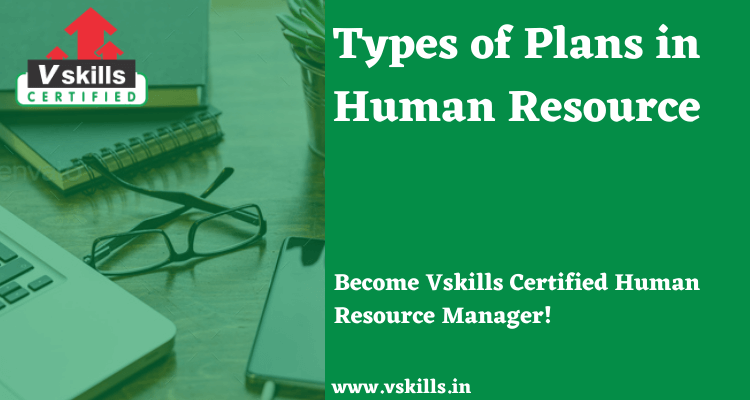Types of Plans in HR– There are nine types of plans in HR, such as, philosophy, purpose, objectives, strategies, policies, procedures and rules, programs, and budgets. Now we shall discuss in brief each of these types of plans.
- Philosophy: The organisations’ role that they wish to play in society in terms of philosophy. The philosophy of the company should have clarity of thought and action in the accomplishment of the economic objectives of a country. Philosophy bridges the gap between society and the company.
- Purpose: Every kind of organized group activities or operations has a purpose. For example, the purpose of a bank is to accept deposits and grant loans and advances.
- Objectives: Objectives are the ends towards which organisational activity is aimed. Every department has its own objectives which may not be completely the same as those of the other department or organisation.
- Strategies: Strategy is the determination of the basic long-term objectives of an enterprise and the adoption of courses of action and allocation of resources necessary to achieve these goals.
- Policies: Policies are general statements or understandings which guide or direct thinking and action in decision making. However, all policies are not statements.
- Procedure and Rules: Procedures are plans that establish the desired method of handling future activities. They detail the exact manner in which a certain activity must be accomplished.
- Programs: These are complexes of goals, policies, procedures, task assignment rules, steps to be taken, or sources to be employed, and other elements necessary to carry out a given course of action.
- Budget: A budget is a statement of expected results in terms of members. It may be referred to as a numerical programme. Cash budget, sales budget, capital expenditure budget are some of the examples of budget.
Practice Questions
Q1. What is workforce planning?
A) Identifying and developing internal employees with high potential
B) Analyzing and forecasting the workforce needs of the organization
C) Developing strategies to improve employee performance
D) Administering employee benefits programs
Correct Answer: B) Analyzing and forecasting the workforce needs of the organization
Q2. What is succession planning?
A) Developing strategies to address gaps in the current and future workforce
B) Setting performance goals and monitoring progress
C) Identifying and developing employees with high potential to fill key leadership positions in the future
D) Administering employee benefits programs
Correct Answer: C) Identifying and developing employees with high potential to fill key leadership positions in the future
Q3. What is talent management?
A) Setting performance goals and monitoring progress
B) Administering employee benefits programs
C) Developing strategies to improve employee performance
D) Identifying and developing employees with high potential to become future leaders
Correct Answer: D) Identifying and developing employees with high potential to become future leaders
Q4. What is performance management?
A) Developing strategies to address gaps in the current and future workforce
B) Setting performance goals and monitoring progress
C) Administering employee benefits programs
D) Identifying and developing employees with high potential to become future leaders
Correct Answer: B) Setting performance goals and monitoring progress
Q5. Which HR plan involves analyzing and forecasting the workforce needs of the organization?
A) Succession planning
B) Talent management
C) Performance management
D) Workforce planning
Correct Answer: D) Workforce planning



